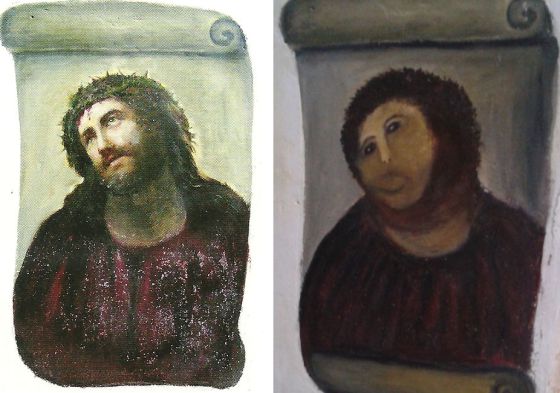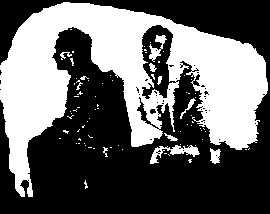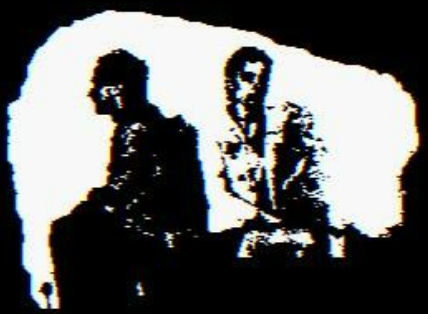Blurring as a Mainstream Restoration Method

The art world is ROFLing about an epic fail that happened in Spain, at the Centro de Estudios Borjanos in Borja. A woman in her eighties restored, on her own initiative, according to her taste and skills, a 19th century painting. Read the story on EL PAIS in Spanish and on Gawker.
Whatever naive and amateur the result might appear, we should acknowledge the fact that the lady was using a mainstream restoration technique for the digital age: blurring.
Look how this technique is used by for instance art.sy, an online art platform that according to Forbes “has the potential to really shake up and transform the art industry”. Along with analog art they want to cover interactive art, screen works and net art. They received screen shots made by Rhizome’s archivist, made in a historic browser version appropriate to the work’s age, in dimensions as it would be viewed on screen. The screen shots are saved in the lossless PNG format appropriate for screen graphics and 746×436 pixels in size. Both qualities irritate the system adjusted to high resolution photo reproductions. So it converts the files to JPEGs and scales and blurs them to death.
Compare the original graphic of my 1996 work

with the same fragment as it appears on artsy

Artsy, go to Barja, find the lady and beg her to work for you!
PS: Artsy introduced bad reproductions of screen shots shown on screen, before there were book publishers competing for the worst screen shot reproductions.
Leave a Reply